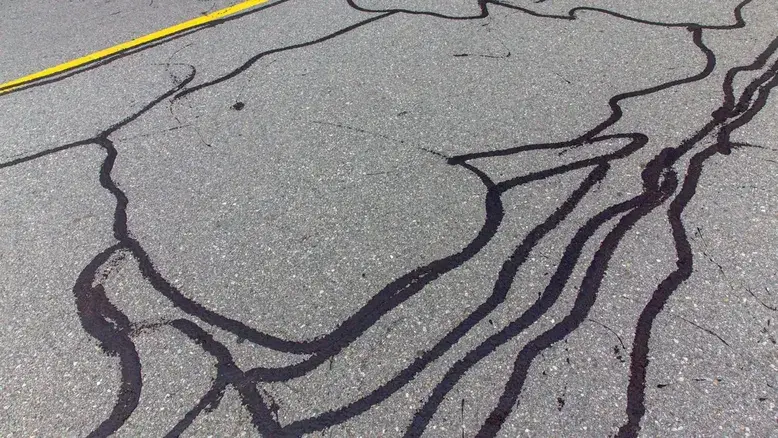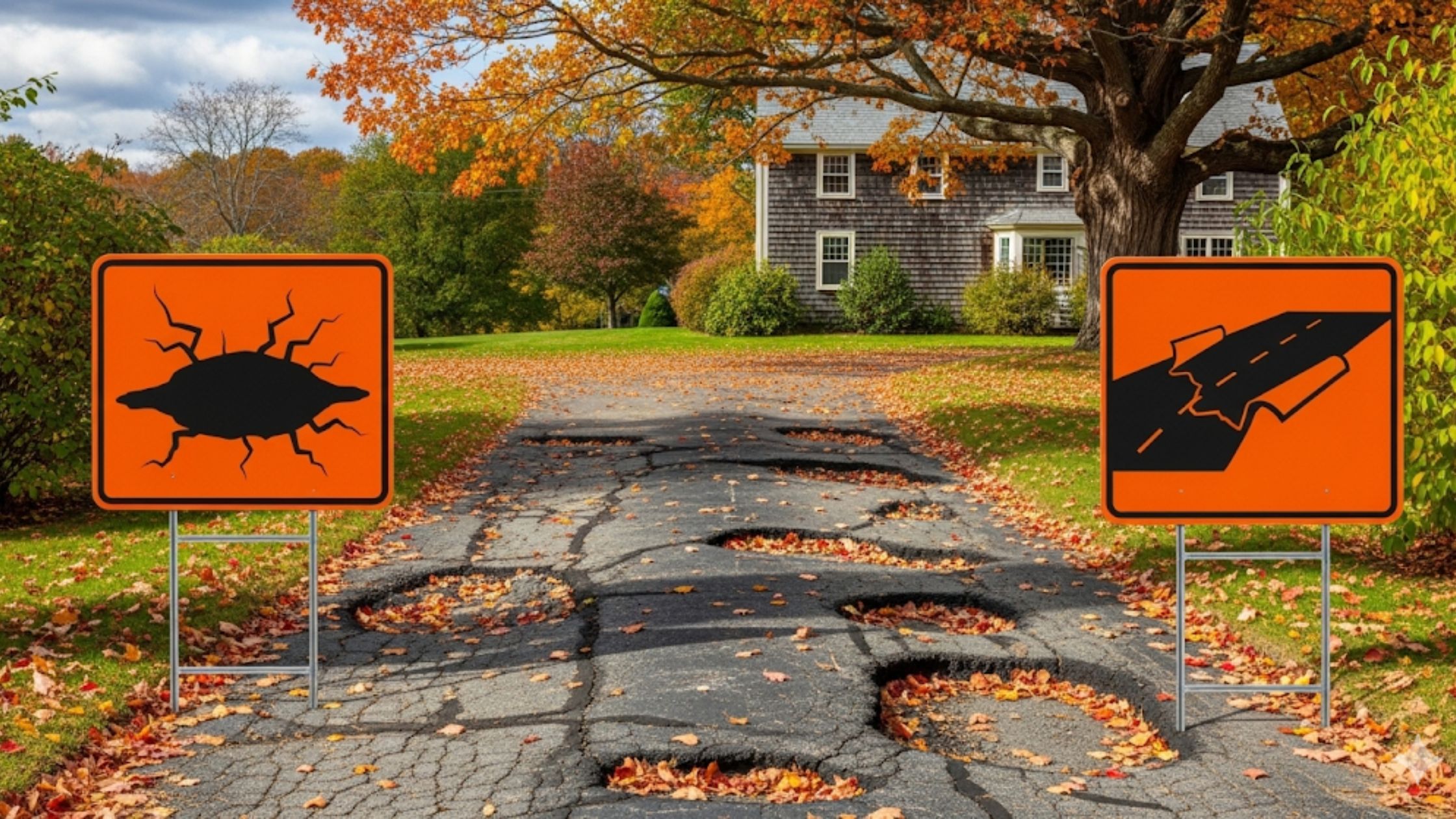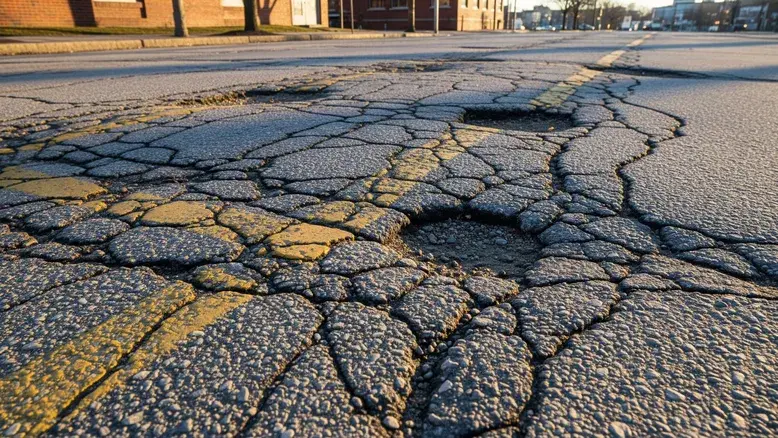Asphalt pavements serve as the lifeblood of driveways, parking lots, and roadways across Massachusetts. Proper maintenance of these surfaces safeguards property value, enhances curb appeal, and prevents costly structural failures. In regions where freeze-thaw cycles and heavy precipitation are common, addressing cracks promptly is critical. This guide offers a deep dive into the art and science of crack filling, blending best practices, local insights, and proven maintenance strategies.
Why Asphalt Crack Filling Matters
Cracks in asphalt may start small, but they can rapidly widen as water infiltrates the surface and undermines the base layer. Left unchecked, these fissures accelerate oxidation, promote pothole formation, and compromise load-bearing capacity. Effective crack filling restores surface integrity, repels moisture, and extends pavement life by years. In Massachusetts’s variable climate, early intervention can mean the difference between a minor repair and a full overlay.
Common Types of Asphalt Cracks
Thermal Cracks
Temperature swings cause asphalt to expand and contract. Over time, stresses at weakened joints form linear “alligator” or thermal cracks.
Block Cracks
Large, rectangular sections of pavement break apart into block-shaped segments due to aging binder and loss of flexibility.
Edge Cracks
These appear along pavement margins where support is lacking and heavy traffic loads focus stress.
Fatigue (Alligator) Cracks
Interconnected, web-like patterns signal structural failure in the pavement’s base or sub-base layers.
Understanding these distinctions helps tailor repair methods for optimal performance.
Recognizing the Underlying Causes
Asphalt deterioration stems from a combination of factors:
- Freeze-thaw cycles that force water into cracks and expand them as ice
- Poor initial compaction or base preparation
- Heavy vehicle loads exceeding design specifications
- Chemical damage from oil, gasoline, and deicing salts
- Tree-root intrusion or invasive vegetation forcing cracks open
By diagnosing root causes, property owners can select the most effective crack filling materials and techniques.
Materials and Methods for Crack Filling
Hot-Pour Sealants
Heated to a liquid state in specialized melters, hot-pour asphalt sealants bond deeply within cracks and harden to remain flexible through temperature shifts.
Cold-Pour Sealants
Ready-to-use polymer emulsions cure at ambient temperatures, offering quick application for smaller, non-working cracks.
Rubberized Joint Sealers
Formulated with rubber polymers and asphalt cement, these sealants expand and contract with the pavement, creating a durable, elastic barrier.
Polymeric Acrylics
Water-based polymers provide UV resistance and excellent adhesion, ideal for light commercial surfaces with pedestrian traffic.
Each material brings unique advantages; selection depends on crack width, movement expectations, and traffic demands.
The Crack Filling Process Step by Step
- Surface Preparation Thorough cleaning removes dirt, vegetation, and debris. A hot-air lance or compressed air blower ensures dry, dust-free cracks.
- Routing and Widening (Optional) For working cracks wider than 3/4", routing tools create a uniform reservoir to improve sealant adhesion.
- Sealant Application Using pour pots or pressurized applicators, technicians fill cracks to just below the pavement surface, avoiding overfill.
- Embedding Fine Aggregate (If Needed) Light broadcast of sand or fine aggregate prevents tracking and enhances skid resistance once the sealant cures.
- Curing and Inspection Sealants typically require 4–24 hours to cure under ideal conditions. Post-application inspection confirms a seamless seal.
This structured workflow maximizes sealant performance and longevity.
In the heart of Boston’s busy commercial districts, The SealCoating Guys have refined every step of this process to deliver flawless, long-lasting repairs.
Seasonal and Timing Considerations
Spring and fall offer optimal temperatures (50°F–85°F) and lower humidity for sealant adhesion. Cold weather can prevent proper curing, while extreme heat may cause sealants to slump. Scheduling crack filling during moderate seasons reduces risks of early sealant failure and ensures better service windows without disrupting high-traffic summer or winter operations.
Cost-Benefit Analysis of Crack Filling
Investing in routine crack filling yields substantial savings compared to mid-life resurfacing or full-depth reconstruction. Typical crack filling costs range from $0.50 to $1.50 per linear foot, while an asphalt overlay can cost $2 to $4 per square foot. By delaying extensive repairs through preventive maintenance, property managers in Worcester and Springfield have reported pavement life extensions of up to five years, translating into thousands of dollars saved annually.
DIY vs. Professional Crack Filling
Homeowners with small driveways may tackle minor cracks using cold-pour kits. However, effective asphalt maintenance involves precise surface prep, proper sealant selection, and specialized equipment. Professionals bring:
- Certified technicians trained in ASTM and NAPA standards
- Commercial grade melters and routing tools
- Warranty-backed workmanship
- Compliance with local environmental regulations
For larger properties and high-volume traffic areas, hiring experts ensures reliable results and long-term protection.
A mid-sized shopping center in Lowell experienced repeated sealant failures until technicians from concrete crack filler service in Massachusetts applied a specialized hot-pour system, boosting pavement resilience and customer safety.
When to Call a Professional
Engage professionals when:
- Cracks exceed ¼ inch in width or show signs of rutting
- Pavement exhibits fatigue or alligator cracking
- High traffic volumes demand rapid, heavy-duty repairs
- Local regulations require licensed applicators for sealant use
Expert intervention prevents small cracks from escalating into structural failures.
Integrating Crack Filling into a Pavement Maintenance Guide
A comprehensive pavement maintenance plan includes:
- Routine Inspections Biannual surveys to pinpoint emerging cracks, ponding water, and edge deterioration.
- Sealcoating Every 2–3 Years Forms a protective membrane against UV damage and oxidation.
- Crack Filling as Needed Targets cracks before they widen, based on inspection data.
- Drainage Management Ensures gutters, catch basins, and grading direct water away from edges and joints.
- Pothole Repairs Fills larger voids with cold or hot-applied asphalt mixes to maintain smooth surfaces.
This systematic approach preserves pavement health and maximizes return on investment.
Case Studies from Across Massachusetts
- A municipal parking lot in Cambridge extended its pavement life by seven years following a proactive crack filling and sealcoating regimen.
- A university campus in Amherst combined infrared repair with crack sealing to eliminate cold joints and prevent further water infiltration.
- A residential complex in Framingham reduced customer complaints by 90% after addressing edge cracks through professional routing and hot-pour sealant application.
Each success story underscores the critical link between timely crack filling and long-term pavement performance.
Environmental and Safety Benefits
Beyond economic gains, crack filling also:
- Mitigates slip-and-fall hazards by eliminating surface gaps
- Reduces dust and debris that can harm vegetation or waterways
- Limits need for raw materials by extending pavement life
- Minimizes construction traffic and emissions associated with larger repairs
These factors align maintenance practices with sustainability goals across the commonwealth.
Addressing Common Misconceptions
Some property owners believe small cracks can be ignored or that sealcoating alone suffices. In reality, sealcoating without prior crack filling leaves voids for water infiltration. Others see crack filling as a one-time fix; ongoing monitoring and spot repairs are essential to manage natural pavement movement and aging.
An effective guide to pavement care always prioritizes targeted crack sealing before broader surface treatments.
Understanding How Crack Filling Prevents Costly Asphalt Repairs
Proper application of sealants into cracks halts moisture ingress, stops crack propagation, and maintains sub-base integrity. By sealing micro-fissures at their source, pavement professionals can prevent the domino effect of deterioration that leads to patches, overlays, and ultimately full-depth extraction. For a deeper insight into the causes and treatment of these issues, Understanding Asphalt Cracks is essential.
The Role of Local Regulations and Standards
Massachusetts municipalities often stipulate environmental controls for sealant runoff and require licensed applicators for hot-pour materials. Adherence to ASTM D6690 (standard specification for sealants) and NAPA guidelines ensures compliance and performance consistency across projects.
Conclusion
Effective asphalt crack filling in Massachusetts is more than a simple repair; it’s a strategic investment that preserves pavement health, reduces long-term costs, and enhances safety. By combining timely interventions, the right materials, and professional expertise, property owners can protect their asphalt assets through every freeze-thaw cycle and heavy-use scenario.
For customized maintenance plans and expert crack filling solutions, trust How Crack Filling Prevents Costly Asphalt Repairs and partner with The SealCoating Guys to safeguard your pavement investment.
Frequently Asked Questions
What is the difference between crack filling and crack sealing?
Crack filling uses a non-routing approach with specialized materials to fill non-working cracks. Crack sealing involves routing out cracks and applying a flexible sealant to accommodate pavement movement.
When is the best time to fill asphalt cracks in Massachusetts?
Ideal conditions occur in spring or fall when temperatures range between 50°F and 85°F. Moderate weather allows sealants to adhere and cure properly.
Can crack filling be performed in cold weather?
Cold-pour emulsions can be applied down to about 40°F, but hot-pour methods require warmer ambient temperatures to ensure proper flow and adhesion.
How long does a crack filler service last?
With proper preparation and materials, professional crack filling can last 3–5 years before reapplication is needed. High-traffic areas may require more frequent attention.
Is it worth sealing small cracks under 1/4 inch?
Yes. Even hairline cracks allow moisture entry and should be sealed to prevent wider gaps and underlying damage.






.webp)

.svg)



